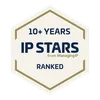True zero-emission vehicles — advances in clean hydrogen fuel

Honda FCX Clarity, Mercedes-Benz F-Cell, Hyundai Tucson FCEV, Toyota Mirai, Hyundai Nexo — all cars which run on hydrogen fuel, emitting only water as a waste product. While these examples suggest that the automotive industry has already achieved sustainable vehicles, for them to be considered truly zero-emission, the hydrogen itself must be generated using renewable energy.
One way of doing this is through electrolysis of water, a process which uses water to convert electrical energy from a power source into hydrogen and oxygen. If the power is generated by solar energy via a photovoltaic array, then we’re well on the way to achieving environmentally-friendly transport.
With this R&D, it’s worth asking — how close are we to true zero-emission vehicles? Here are two key next steps to consider.
Step one: commercialising clean hydrogen production #
In March 2019, the first export of cleanly-produced hydrogen was achieved when Queensland University of Technology, shipped hydrogen produced using solar energy to Japanese energy company JXTG. Queensland Premier Annastacia Palaszczuk described this event as “an exciting first step in producing and exporting hydrogen at a commercial scale in the future”.
While there’s still some way to go, this first step is especially exciting given that it’s set against the Australian government’s announcement, back in January 2019, of $1bn in funding for clean hydrogen development and $90m for the research, demonstration and pre-commercial deployment of hydrogen technologies.
Step two: increasing the efficiency of clean hydrogen generation #
To create truly-green hydrogen, solar cells convert solar energy to electrical energy, which is then used to electrolyse hydrogen gas from water. Both conversion processes have improved over recent years: for example, from 2009 to 2018, the efficiency of perovskite solar cells increased from 3.8% to 23.3%.
Here are some other recent innovations improving the efficiency of clean hydrogen generation.
Nickel and iron nanoparticles#
Electrolysis is an energy-intensive method of producing hydrogen from water. However, researchers at the University of Arkansas, together with Brookhaven National Lab and Argonne National Lab, have found a way of boosting the efficiency of the process.
The team discovered that when a catalyst of nickel core surrounded by iron and nickel nanoparticles is introduced into the electrolysis process, the oxygen evolution reaction is stimulated. This increases the ease with which the water molecules are split into oxygen and usable hydrogen.
Coffee power#
In other (somewhat unconventional) developments, researchers at the University of California and Solargiga Energy have enhanced the efficiency and long-term stability of perovskite solar cells by introducing caffeine into the perovskite layer. This imaginative approach was inspired by PhD student Jingjing Xue’s offhand comment — “If we need coffee to boost our energy then what about perovskites? Would they need coffee to perform better?”
“We were surprised at the results,” said Rui Wang of UCLA. The caffeine’s carbonyl groups bonded to lead ions in the perovskite material which led to an efficiency increase from 17% to 20% — an effective increase of almost 18%. In improving the performance of perovskite-based solar cells, the team hope that the surprising results will play a role in scaling the production of such cells. In the meantime, the coffee-fuelled research continues…
The future of hydrogen-powered vehicles #
There’s still a long road ahead for hydrogen-powered vehicles, which are unlikely to become a common sight on our roads any time soon. They currently seem stuck in a low-demand, low-supply rut as battery-powered vehicles accelerate away, buoyed by the success of companies such as Tesla. Improvements to the hydrogen infrastructure are necessary — only in the past few years have battery-powered cars really become a popular option, as ever more charging stations appeared across the country. At the moment, hydrogen is playing catch-up.
It’s worth keeping an eye on Swindon (home of the UK’s first fully-renewable hydrogen station and Hydrogen Hub) and leasing company Arval, which plans to increase the number of hydrogen-powered cars in the town to 170 by 2020. Arval has arranged a roadshow to promote hydrogen-powered cars — you can catch the next event in Birmingham on 16 October, or in London later this year.
To find out how we can help you protect your automotive innovations with intellectual property rights, feel free to get in touch with us.




















